Operating Awards
An amateur radio operating award is earned by an amateur radio operator for establishing two-way communication (or “working”) with other amateur radio stations. Some awards are attainable by successfully exchanging call signs and signal reports with other operators, or an operator can focus on working toward awards offered by contesting events, such as ARRL WW DX Contest.
Contesting usually involves a competition to see who can contact the most stations in a set period of time on certain bands and within specific rules.[1] Awards are sponsored by national amateur radio societies, radio enthusiast magazines, or amateur radio clubs, and aim to promote activity, and promote good operating practices on the amateur radio bands.
Each award has its own set of rules and fees. Some awards require the amateur radio operator to have contacted other stations in a certain number of countries, Maidenhead grid locators, states, or counties, etc. Because amateur radio operators are forbidden by regulation to accept financial compensation for their on-air activity, award recipients generally only receive a certificate, wooden plaque, or a small trophy as recognition of their award.

Most amateur radio operating awards require that the applicant submit proof, such as QSL cards, of the contacts which satisfy the requirements of the award.
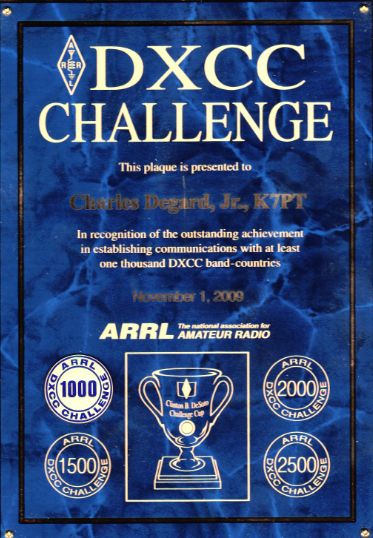
There are thousands of operating awards available. The most popular awards are the Worked All States award and the Worked All Continents award, and the more challenging Worked All Zones, DX Century Club (DXCC), Islands on the Air (IOTA) and VHF/UHF Century Club (VUCC) awards. DXCC is the most popular awards program, initially requiring amateurs to contact 100 of the 340 (as of 2015) separately designated countries and territories (“entities”) in the world.
Other popular awards include contacting remote islands, beaches, US counties, and lighthouses. Many awards are available for contacting amateurs in a particular country, region or city. Summits On The Air, or SOTA, tallies points towards awards to hams who broadcast from mountain elevations or make contact with those transmitting from them, for which events are scheduled periodically. Another popular “On the Air” activity, is called “Parks On The Air” where operators set up at various State and Federal parks around the country.
Many amateurs also enjoy setting up and contacting special event stations. Set up to commemorate special occurrences, they often issue distinctive QSLs or certificates. Some use unusual prefixes, such as the call signs with “96” that amateurs in the US State of Georgia could use during the 1996 Atlanta Olympics,[2] or the OO prefix used by Belgian amateurs in 2005 to commemorate their nation’s 175th anniversary.[3] (Not surprisingly, there are also awards for working sufficient numbers of prefixes.) Some events are held annually such as Guides on the Air and Jamboree on the Air. Many amateurs decorate their radio “shacks” (the room where they keep their radios) with these certificates.
Operating Awards: Chasing Wallpaper

Another fun activity in amateur radio is pursuing operating awards. There are a wide variety of awards that you can earn that result in a nice certificate (suitable for framing) to recognize the achievement. These certificates are often referred to as “wallpaper” and some radio hams do cover their ham shack walls with these awards.
Typically, you’ll need to obtain confirmation of the radio contact, either in written form (a QSL card from the other ham) or via an electronic QSL system such as Logbook of the World or eQSL. Some awards just require you to submit a list of radio contacts, including date/time, frequency, call sign worked, etc. The confirmation requirements vary considerably so be sure to read the specific rules for the award you are pursuing. There is often a nominal fee for processing the award.
Worked All States (WAS)
The ARRL offers the Worked All States Award for confirmed contact with all 50 U.S. States. This is a good award to start out with since most hams on HF will be able to accomplish this without too much trouble. Smaller or low population states such as Rhode Island and New Hampshire may be a challenge to find but persistence pays off.

Worked All Continents (WAC)
The Worked All Continents Award is offered by the International Amateur Radio Union (IARU) and is administered in the US by the ARRL. As the name implies, you need to work all of the continents to qualify for this award. For this award, the continents are defined as: North America, South America, Africa, Oceania, Asia and Europe. Note that Antarctica is considered part of Oceania, along with most of the Pacific islands including the Hawaiian Islands. This list at the ARRL designates the continent for all countries around the world. WAC is actually not that difficult of an award as long as you have some good propagation on the higher HF bands (20m, 15m and 10m). Africa is usually the most difficult from North America, due to the distance and the lower population density.

DX Century Club (DXCC)
You might think there would be a Worked All Countries Award but instead we have the DX Century Club. The name “century club” indicates that you need to work 100 countries to qualify for the award. Oh, I should say “entities” which is the proper DXCC terminology for “countries”. What qualifies as an Entity is a bit complicated and is subject to some debate. For example, Alaska counts as a separate country, I mean entity. For more on this, see Is Alaska A Country?

VHF/UHF Century Club (VUCC)
The VHF equivalent of DXCC is the VUCC award, which is based on working maidenhead grids on a particular band above 50 MHz. To qualify for 50 MHz VUCC or 144 MHz VUCC, you need to contact 100 different grids on that particular band. Fifty grids are required for 222 MHz and 432 MHz, and even fewer grids for the higher bands. There is a Satellite VUCC award for satellite contacts, starting with working 100 grids.
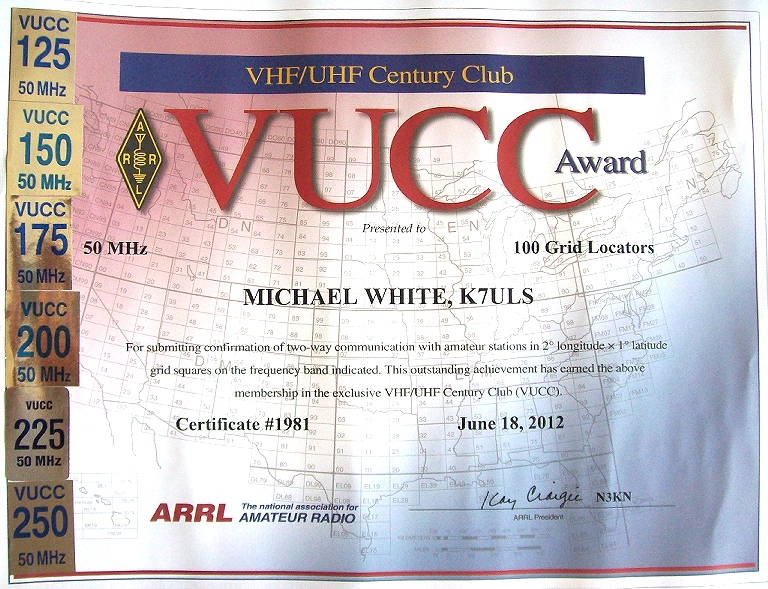
Summits On The Air (SOTA)
Another interesting set of awards is associated with the Summits On The Air (SOTA) program. SOTA offers quite a variety of awards for working or activating designated summits but the two main awards are: Shack Sloth (for obtaining 1000 points by contacting summits) and Mountain Goat (for obtaining 1000 points by activating summits). There is a points system that relates to the elevation of the mountain, with higher summits generally having more points.

Other Awards
There are so many awards out there, I cannot begin to list them all. It seems there is an award for every interest and every person involved in ham radio. Check out the DX Awards web site by K1BV to see a listing of many of the awards available.
So consider chasing some awards to provide a focus for your ham radio activity. It can be a lot of fun and provide a sense of accomplishment.
Our YouTube Channel

All of the video pertaining to Mohawk ARC have been placed on The MohawkARC You Tube channel
Click on the link below
Mohawk ARC You Tube Page
Many new videos uploaded
What is, and how to QSL
A QSL card is a written confirmation of either a two-way radio communication between two amateur radio stations; a one-way reception of a signal from an AM radio, FM radio, television or shortwave broadcasting station; or the reception of a two-way radio communication by a third party listener. A typical QSL card is the same size and made from the same material as a typical postcard, and most are sent through the mail as such.
QSL card derived its name from the Q code “QSL”. A Q code message can stand for a statement or a question (when the code is followed by a question mark). In this case, ‘QSL?’ (note the question mark) means “Do you confirm receipt of my transmission?” while ‘QSL’ (without a question mark) means “I confirm receipt of your transmission.
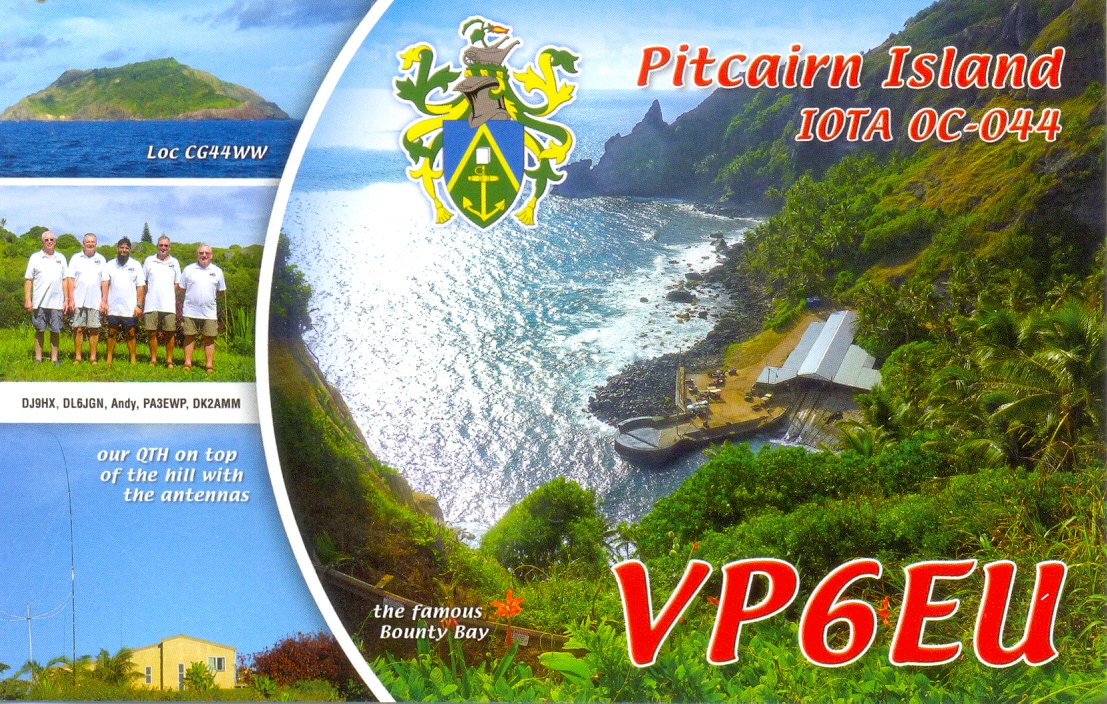
During the early days of radio broadcasting, the ability for a radio set to receive distant signals was a source of pride for many consumers and hobbyists. Listeners would mail “reception reports” to radio broadcasting stations in hopes of getting a written letter to officially verify they had heard a distant station.
As the volume of reception reports increased, stations took to sending post cards containing a brief form that acknowledged reception. Collecting these cards became popular with radio listeners in the 1920s and 1930s, and reception reports were often used by early broadcasters to gauge the effectiveness of their transmissions.[2]
The concept of sending a post card to verify reception of a station (and later two-way contact between them) may have been independently invented several times. The earliest reference seems to be a card sent in 1916 from 8VX in Buffalo, New York to 3TQ in Philadelphia, Pennsylvania (in those days ITU prefixes were not used). The standardized card with callsign, frequency, date, etc. may have been developed in 1919 by C.D. Hoffman, 8UX, in Akron, Ohio. In Europe, W.E.F. “Bill” Corsham, 2UV, first used a QSL when operating from Harlesden, England in 1922.[3]

Amateur radio operators exchange QSL cards to confirm two-way radio contact between stations. Each card contains details about one or more contacts, the station and its operator. At a minimum, this includes the call sign of both stations participating in the contact, the time and date when it occurred (usually specified in UTC), the radio frequency or band used, the mode of transmission used, and a signal report.[4] The International Amateur Radio Union and its member societies recommend a maximum size of 3½ by 5½ inches (140 mm by 90 mm).[5]

THE ARRL OUTGOING QSL SERVICE
Exchanging paper QSL cards to confirm a two-way contact is a tradition that dates back to the beginning of Amateur Radio. Today, many amateurs prefer to confirm QSOs electronically with Logbook of The World (LoTW), however there are those who like to swap paper cards.
Exchanging QSL cards directly with your QSO partner can be very expensive. If you calculate the cost of postage to send an envelope overseas, plus any money enclosed to cover the return postage, a single QSL card request can cost up to five dollars or more.
Confirming QSOs electronically through LoTW is a rapid and cost-effective way to earn QSO credit for awards, but for the paper card collector, the QSL Bureau offers an alternative to the direct QSL method. To use this service, you only need to provide proof of ARRL membership and pay the fee according to the schedule below. Cards sent via the Bureau are sorted by the Outgoing QSL Service staff, who handle approximately 700,000 each year. Cards are shipped from HQ on a quarterly basis. The Service ships QSL cards to QSL Bureaus throughout the world, which are typically maintained by the national Amateur Radio Society of each country. (Please be advised that the ARRL QSL Service cannot be used to exchange QSL cards within the 48 contiguous states [US to US].) Sending QSL cards via the Bureau takes a little longer than mailing them directly, but keep in mind that what you might lose in speed is more than made up in the convenience and savings of not having to address and mail each QSL card separately. You may also send QSLs via the bureau to any QSL manager who manages a non-US call sign. However, you must look up the QSL manager and clearly indicate the QSL manager’s call sign on your outgoing card.
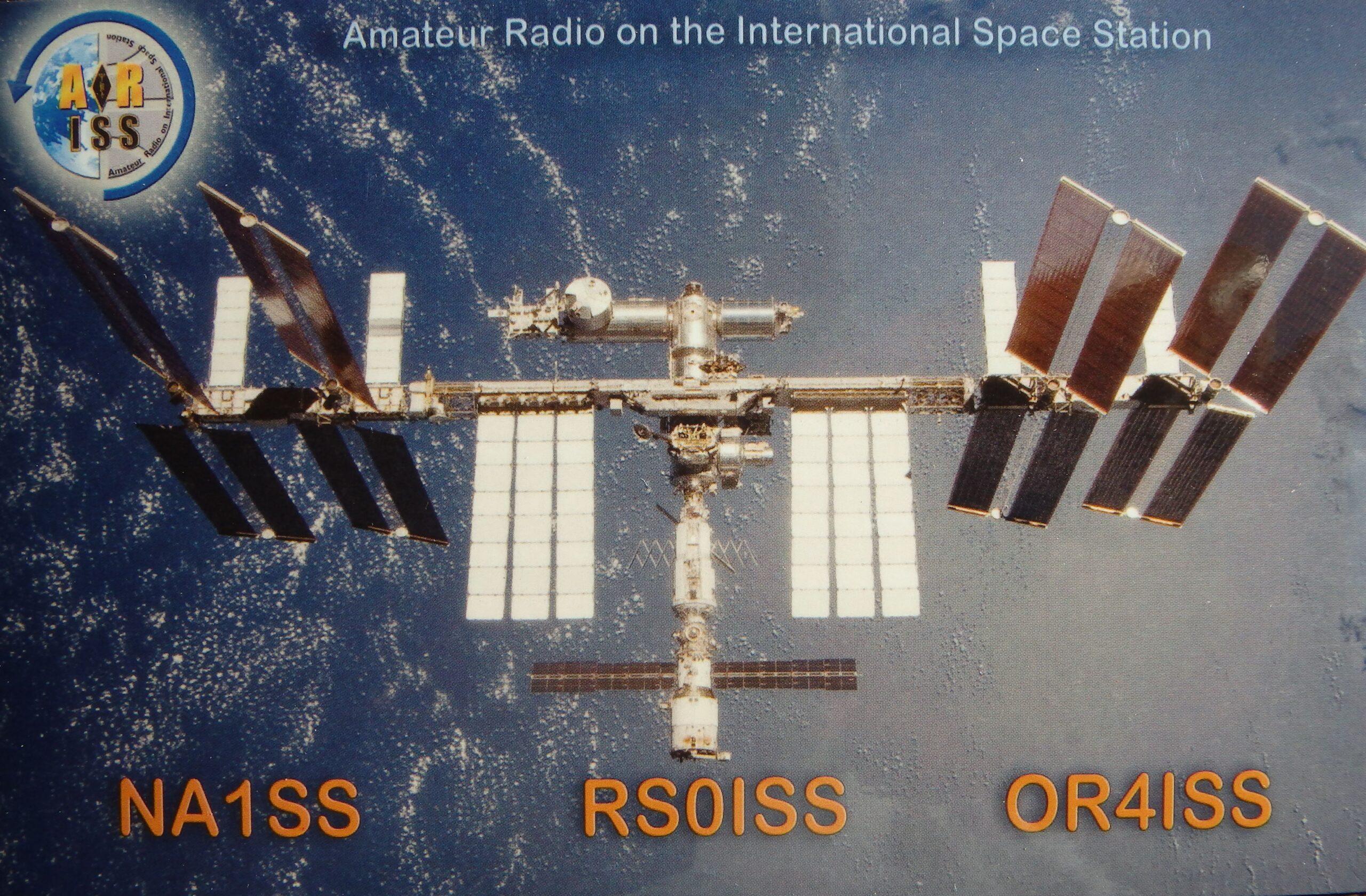
Incoming QSL Bureau Introduction
Within the US, the ARRL DX QSL Bureau System is made up of numerous call-area bureaus that act as central clearing houses for QSL cards arriving from foreign countries. Volunteers staff these “incoming” bureaus. The service is free; ARRL membership is not required. (Canadian amateurs can use the Radio Amateurs of Canada’s incoming QSL bureau.) How the System Works: Most countries have “outgoing” QSL bureaus that operate in much the same manner as the ARRL Outgoing QSL Service The member sends his cards to his outgoing bureau where they are packaged and shipped to the appropriate countries.
A majority of the DX QSLs are shipped directly to the individual incoming bureaus where volunteers sort the incoming QSLs by the first letter of the call sign-suffix. One individual may be assigned the responsibility of handling from one or more letters of the alphabet. All incoming QSL Bureaus have email addresses. Some Bureaus have active web pages. Information for all of the US incoming QSL bureaus is listed below.
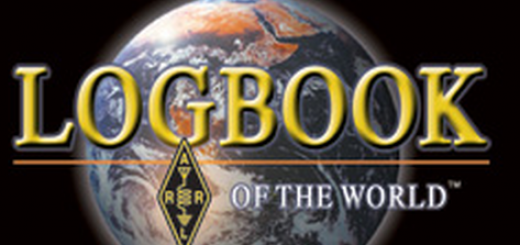
LOG BOOK OF THE WORLD
Logbook of the World (LoTW) is a web-accessed database provided by the American Radio Relay League (ARRL) to implement a contact verification service among amateur radio operators. Using LoTW, radio amateurs (hams) can claim and verify contacts (QSOs) made with other amateurs, generally for claiming credit for operating awards, such as DXCC. This kind of verification formerly required exchange of paper QSL cards and submission to ARRL, a slow and somewhat expensive process. LoTW began operation in 2003. As of February 2021, more than 270K QSL records have been processed via LoTW….(See below)

Example of LoTW page, for checking a specific QSO made and submitted
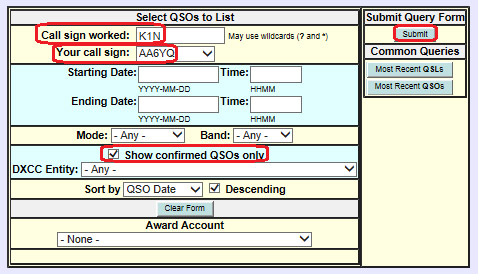
Most logging programs such as DX Keeper, Ham Radio Deluxe, etc. etc. will allow the operator to upload QSO’s from his/her computer logging software, into the LoTW data base.
Another example of an Award summary off the LoTW user page, reflects status of CQ Worked All Zones Award. See below:
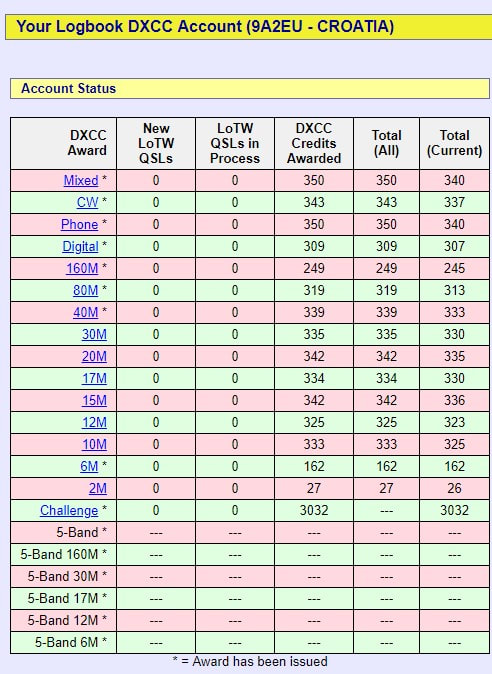
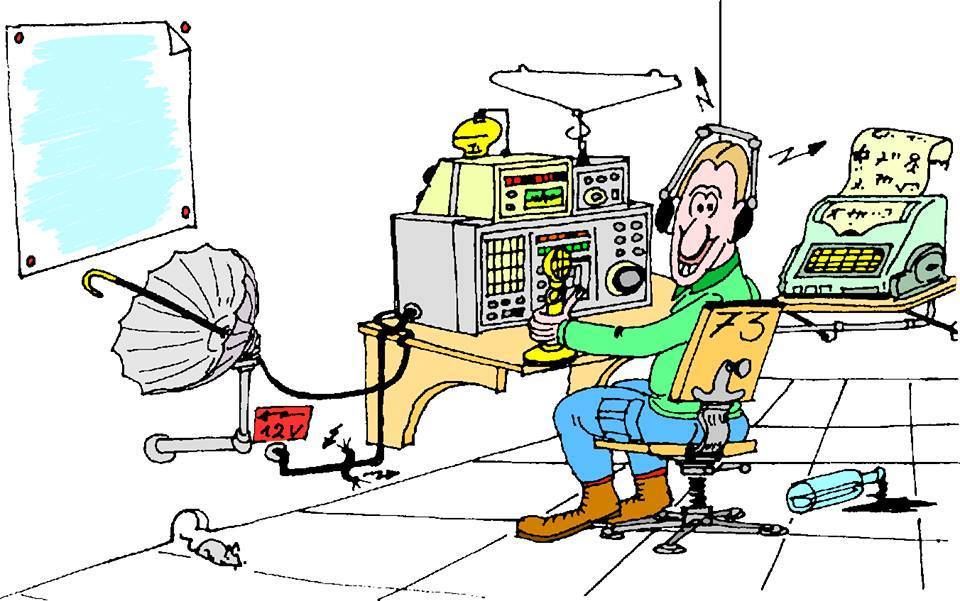
eQSL
Is the first and only global electronic QSL card exchange for amateur radio operators and SWLs. It is designed to be the fastest, easiest, and cheapest way to exchange QSO confirmations, eliminating the cost and time that regular QSL cards have required for the past half century. With a larger membership than the entire ARRL, eQSL.cc is THE place where everyone exchanges QSLs quickly and easily. It has also become one of the largest awards organization for amateur radio with over 270,444 eAwards issued. Unlike LoTW, eQSL does not require the rigid validation of station location, and alignment of operator and station.

Club Log is a web-based application that analyses log files from radio amateurs all over the world. Using the logs, Club Log offers you a wide range of reports for your own benefit, and identifies large scale trends from the sum of all activity in the database.
If you participate in Club Log by uploading your log you will receive:
- Personal DXCC reportsand league tables
- Detailed analysisof your log, using researched DXCC information
- Zone chartsfor your log, again based on detailed research
- A personal timelineof your activity (DXCCs per year, band and mode info)
- Your own log search tool, eg. to link from your web page or QRZ profile
- A filtered DX Clusterwhich only tells you about DX you still ‘need’
- A say in the Club Log most wanted report: your log is part of the trend data
- Access to propagation and activity predictions, using everyone’s logs
- QSL suggestionsto help you send out just the cards you need
- OQRS(Online QSL Requests) to make direct and bureau QSLing faster and easier
- Live Streamsto make it engaging and interactive to work DXpeditions
- Satisfaction from taking part in and improving a free DXing resource.
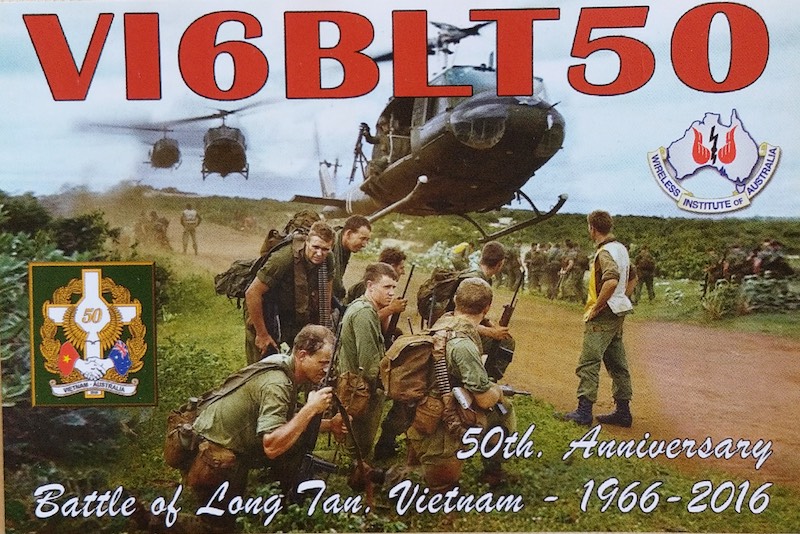
WHAT IS DXing
. DXing is the hobby of receiving and identifying distant radio or television signals, or making two-way radio contact with distant stations in amateur radio, citizens’ band radio or other two-way radio communications. Many DXers also attempt to obtain written verifications of reception or contact, sometimes referred to as “QSLs” or “veries”. The name of the hobby comes from DX, telegraphic shorthand for “distance” or “distant”.[1]
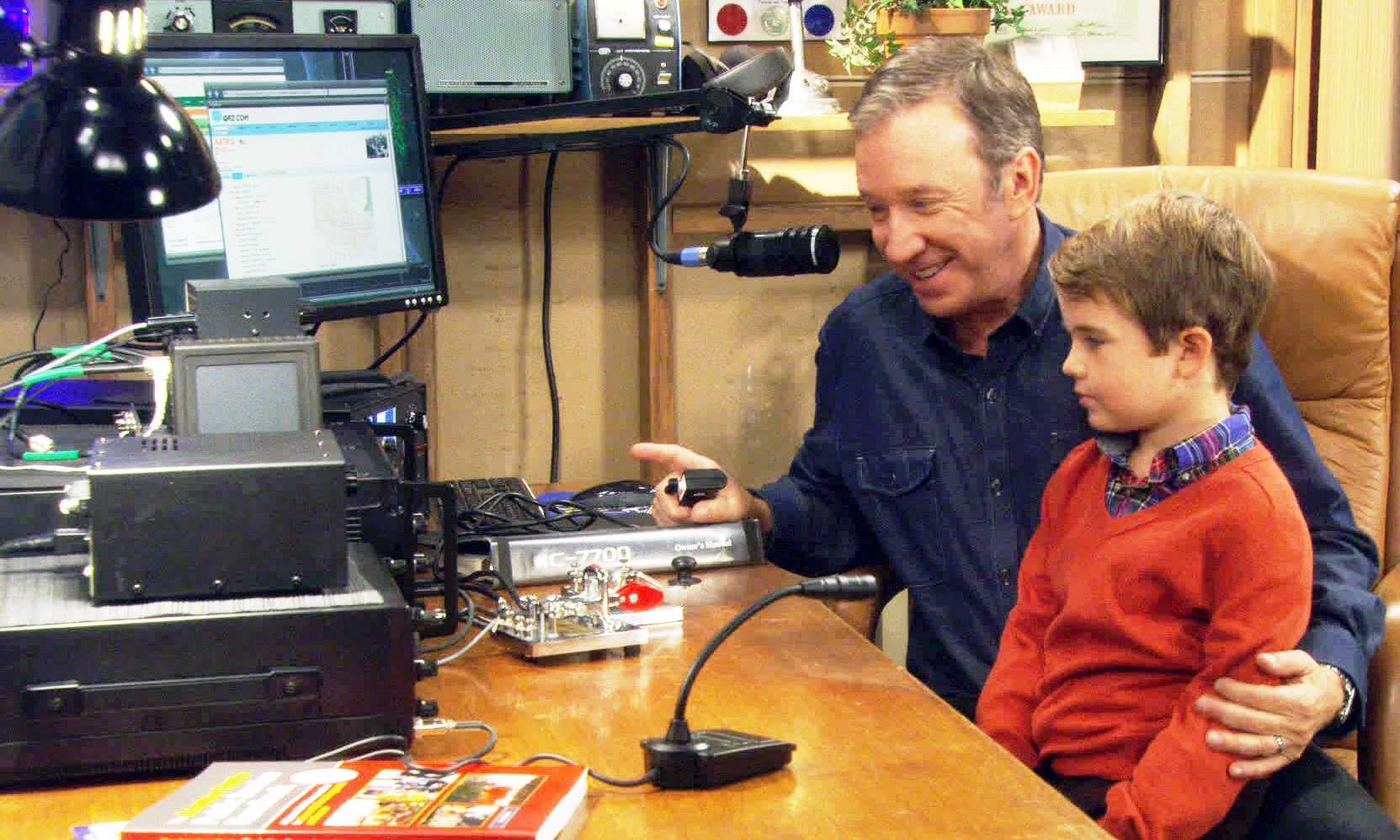
The practice of DXing arose during the early days of radio broadcasting. Listeners would mail “reception reports” to radio broadcasting stations in hopes of getting a written acknowledgement or a QSL card that served to officially verify they had heard a distant station. Collecting these cards became popular with radio listeners in the 1920s and 1930s, and reception reports were often used by early broadcasters to gauge the effectiveness of their transmissions. Although international shortwave broadcasts are on the decline, DXing remains popular among dedicated shortwave listeners. The pursuit of two-way contact between distant amateur radio operators is also a significant activity within the amateur radio hobby

Amateur radio operators who specialize in making two way radio contact with other amateurs in distant countries are also referred to as “DXers”. On the HF (also known as shortwave) amateur bands, DX stations are those in foreign countries. On the VHF/UHF amateur bands, DX stations can be within the same country or continent, since making a long-distance VHF contact, without the help of a satellite, can be very difficult. DXers collect QSL cards as proof of contact and can earn special certificates and awards from amateur radio organizations.[8]

In addition, many clubs offer awards for communicating with a certain number of DX stations. For example, the ARRL offers the DX Century Club award, or DXCC. The basic certificate is awarded for working and confirming at least 100 entities on the ARRL DXCC List.[9] For award purposes, other areas than just political countries can be classified as “DX countries”. For example, the French territory of Reunion Island in the Indian Ocean is counted as a DX country, even though it is a region of France. The rules for determining what is a DX country can be quite complex and to avoid potential confusion, radio amateurs often use the term entity instead of country. In addition to entities, some awards are based on island groups in the world’s oceans. On the VHF/UHF bands, many radio amateurs pursue awards based on Maidenhead grid locators
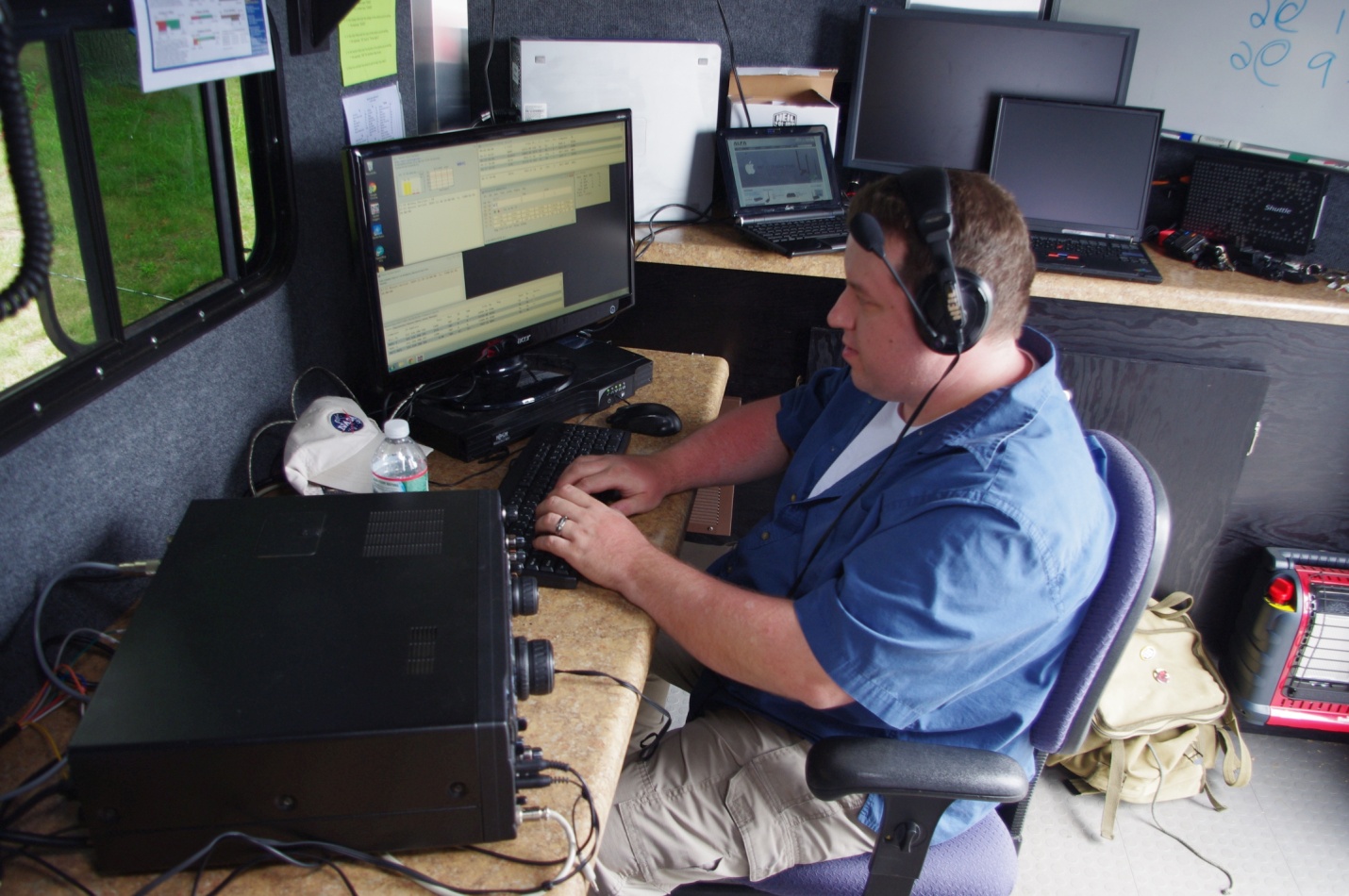
In order to give other amateurs a chance to confirm contacts at new or exotic locations, amateurs have mounted DXpeditions to countries or regions that have no permanent base of amateur radio operators.[8] There are also frequent contests where radio amateurs operate their stations on certain dates for a fixed period of time to try to communicate with as many DX stations as possible.
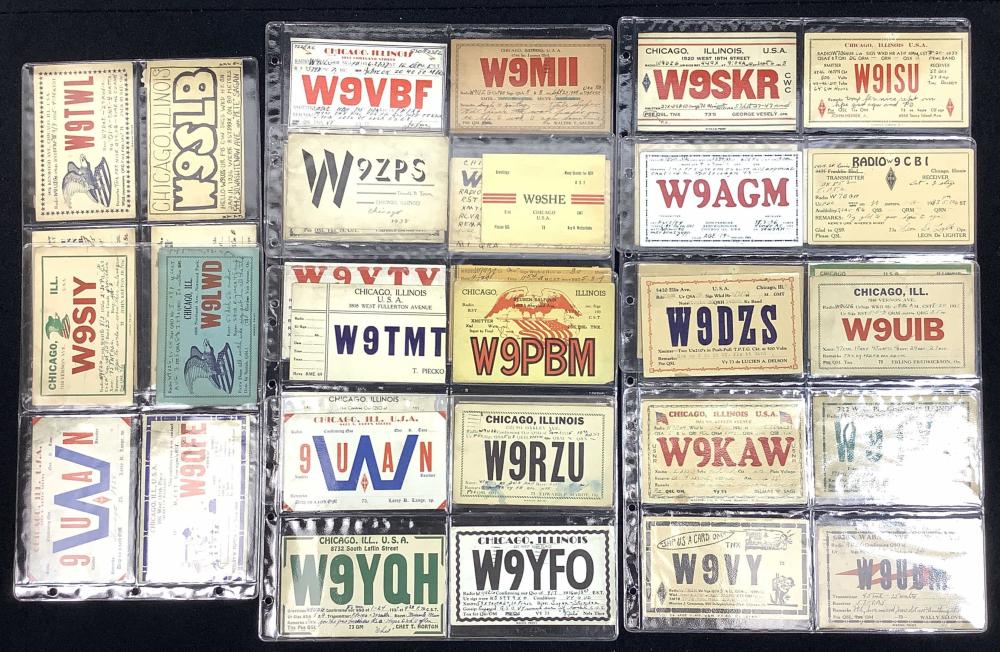
Paper QSL cards
Widely used by many Hams throughout the world paper is sometimes the only way Paper QSL’S to confirm a contact. However they are several electronic ways of exchanging QSL. The first is ARRL’s Log Book of the World (LoTW) widely used by hundreds of thousands of Hams around the world. LoTW is good for ARRL sponsored contests, as well now, for several CQ Awards, including the CQWAZ Award. There are many other contests being sponsored by many other countries and clubs also. They are other electronic QSL tools that you can use eQSL and the Club Log OQRS system. However these won’t count towards the ARRL awards unless you get a QSL card from them. After you get the paper QSL they can be submitted to the ARRL for confirming. The ARRL also maintains a in incoming and outgoing QSL bureaus. However this method is slow but much more cost

Below is an example of an LoTW page, where the operator can garner total/status of his/her confirmed LoTW QSO’s via the ARRL supported website pages….
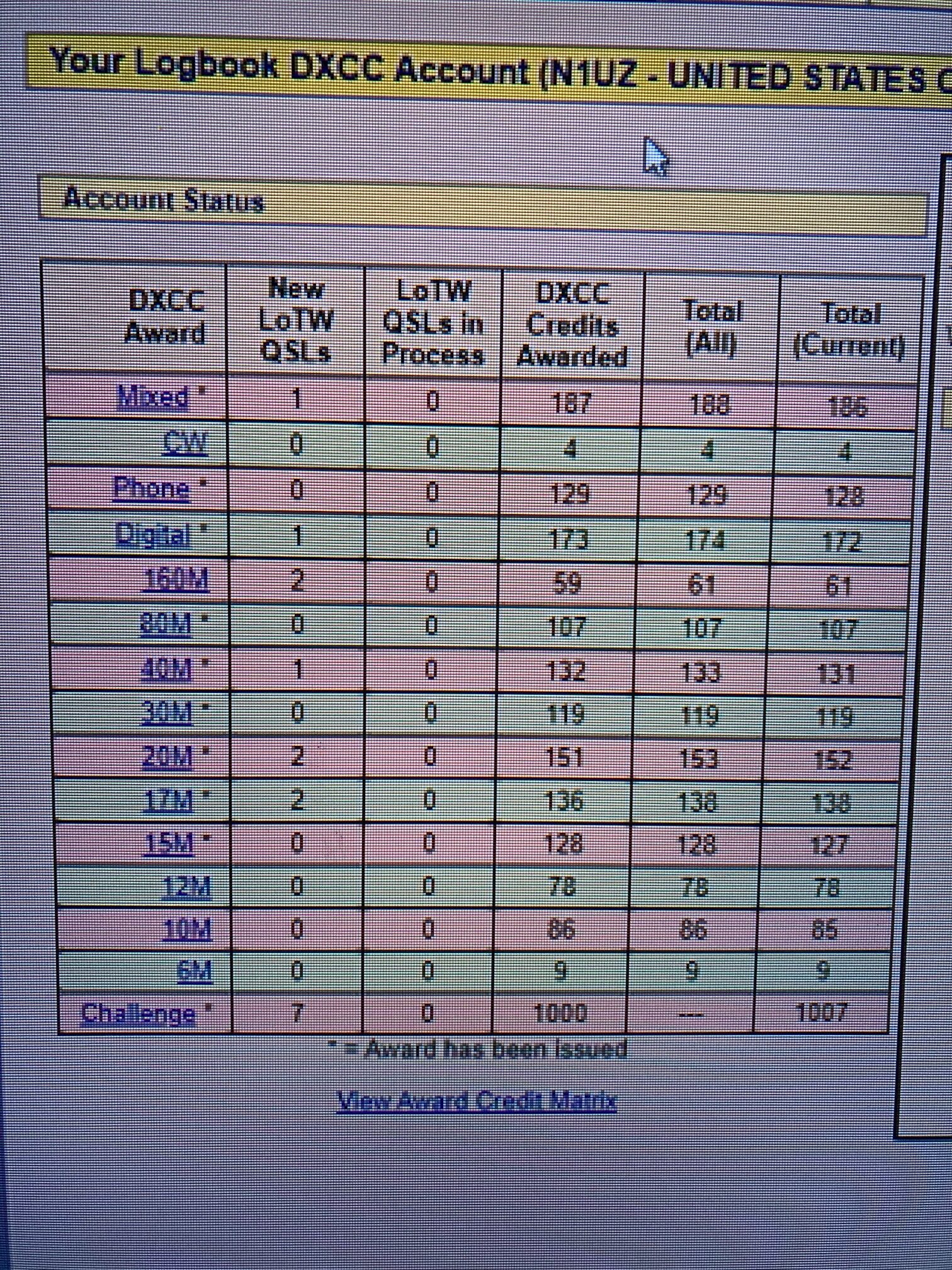
Youth Science and Technology
Each year the ARRL along with hundreds of Amateur Radio Clubs around the Country take part in science and technology expositions for young people at different ham gatherings. These expositions provide middle and high school students with an informal, yet hands-on introduction to real-life applications and the fun of science, technology, engineering, and math (STEM). The object being to get youth interested in science and technology.

Jamboree on the Air
Amateur radio operators from all over the world participate with over 500,000 Scouts and Guides to teach them about radio, and to assist them in contacting their fellow Scouts and Guides by means of amateur radio, and since 2004, by the VOIP-based Echolink[3] as well. Echolink continues to gain popularity within the Ham Radio community, by allowing operators to access repeaters and links directly from an app on their cell phones. This provides the Scouts and Guides with a means of learning about fellow Scouts and Guides from around the world. Scouts and Guides are also encouraged to send paper or electronic confirmations known as “QSL cards“, or “eQSL when they are sent electronically. In recent years, a parallel Jamboree on the Internet (JOTI) has developed. It is an adjunct to the World Scout Jamboree
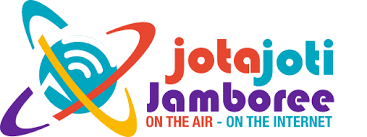
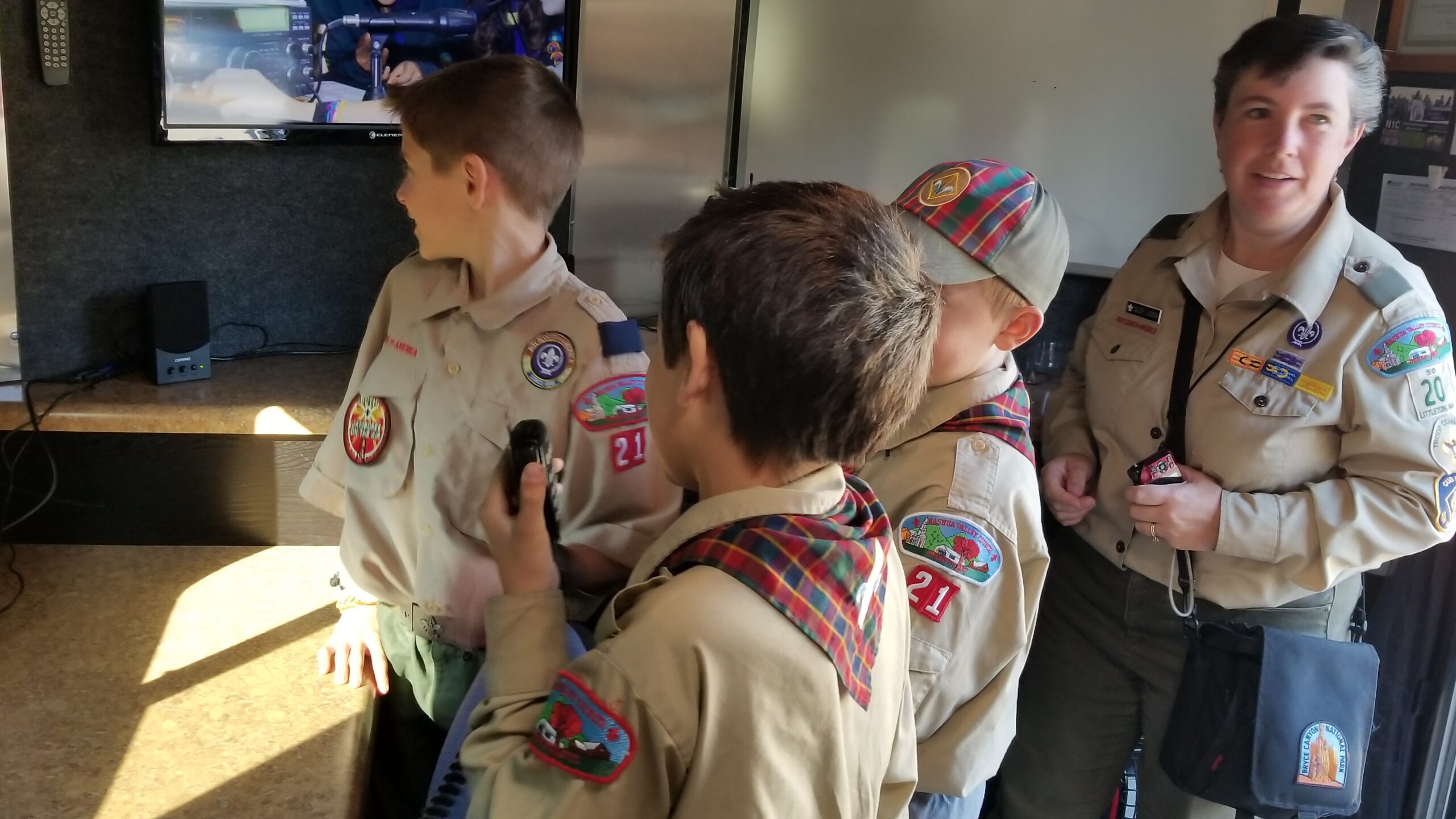
The event is recognized as one of international participation by the various Scout and Guide organizations, and supports several awards which are a part of Scouting and Guiding programmers. The Boy Scouts of America recognizes this as an international Scouting event for Citizenship in the World Merit Badge.
Amateur Radio Clubs in Schools
School Amateur Radio Clubs are a neat way to get in an extra shot of Science, Technology, Engineering and Mathematics (STEM) while exercising your on-air conversational skills and tuning up your enquiring minds. It will expand your horizons, build your confidence, harness your creativity and help you develop new skills. Each week there will be different activities to whet your appetite. SARC members learn to work together as a group and to help each other through some pretty exciting challenges.
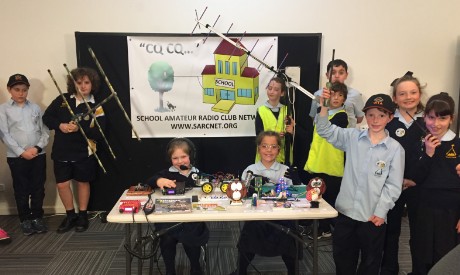
One school that I found doing an internet search is listed here; SARCNET students will learn just about every aspect of Amateur Radio from getting your license to High Altitude Balloons like the one shown below:
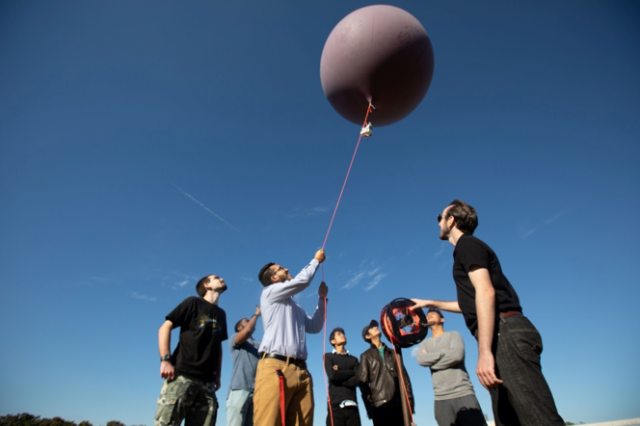
Youth and Ham Radio
WHAT IS HAM RADIO
An amateur radio operator is an individual who typically uses equipment at an amateur radio station to engage in two-way personal communications with other similar individuals, on radio frequencies assigned to the amateur radio service by the Federal Communications Commission (FCC) in the United States and the International Telecommunication Union worldwide.
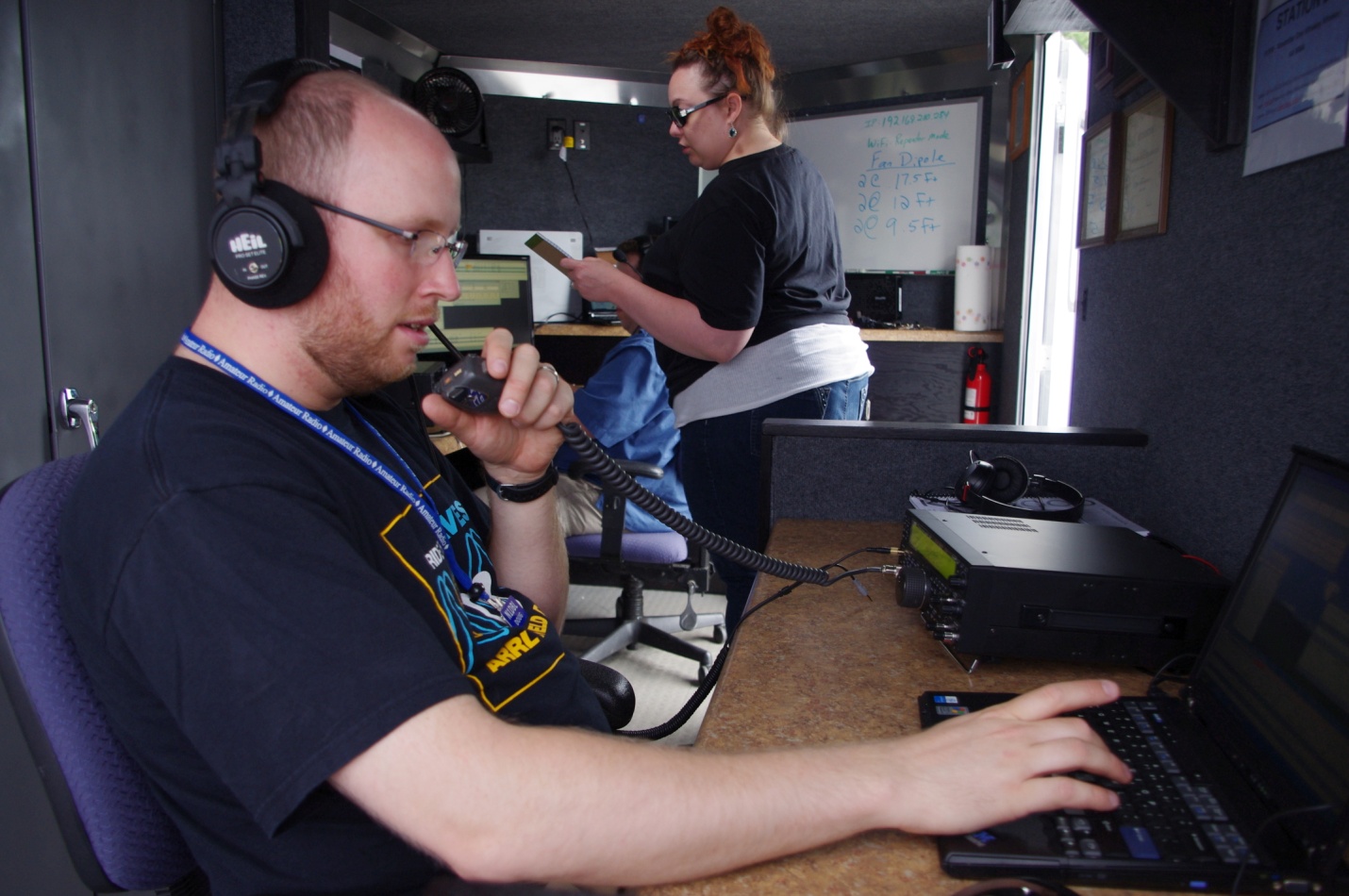
Amateur radio operators build and operate several types of amateur radio stations, including fixed ground stations, mobile stations, space stations and temporary field stations. A slang term often used for an amateur station’s location is the “shack,” named after the small enclosures added to the upper works of naval ships to hold early radio equipment and batteries.
American amateur radio operators are granted an amateur radio license by the FCC upon passing an examination on radio theory and operation. As a component of their license, amateur radio operators are assigned a call sign (such as KC9ANG) that they use to identify themselves during communications. There are about 3 million amateur radio operators worldwide, including more than 700,000 licensed operators in the United States alone

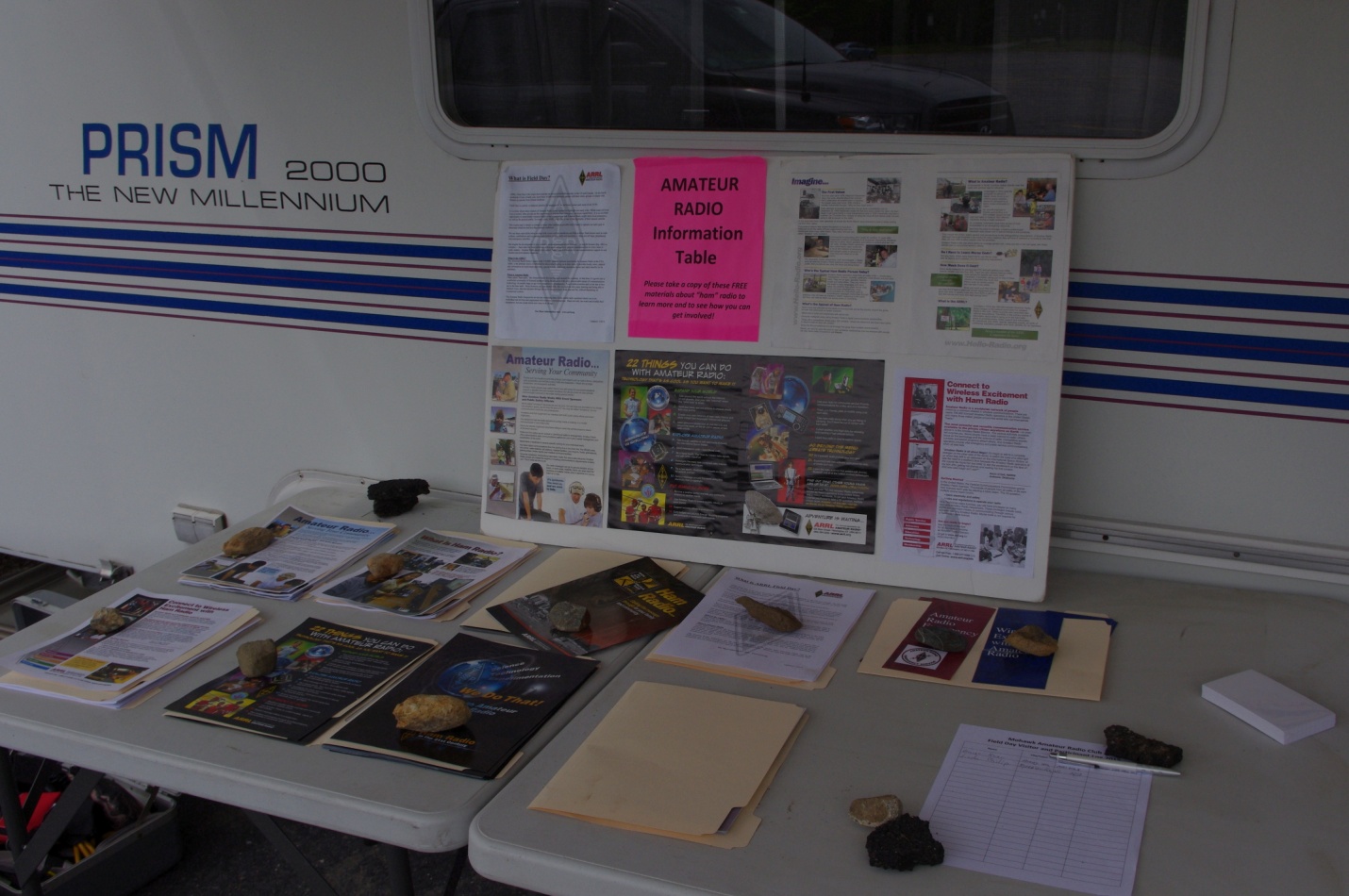
Amateur radio operators are also known as radio Amateur or hams. The term “ham” as a pejorative nickname for amateur radio operators was first heard in 1909 by operators in commercial and professional radio communities. The word was subsequently embraced by the operators, and stuck. However, the term did not gain widespread usage in the United States until around 1920, after which it slowly spread to other English-speaking countries.

The term “amateur” in amateur radio is used in the same sense as an amateur athlete, as radio amateurs are prohibited by law from accepting monetary or material compensation of any kind for any activities they perform as radio operators. However, just as amateur athletes are among the top athletes in the world, ham radio operators have led the advancement of the science of radio communications for over a century. Today, we take for granted radio, television, satellite communications, cell phones, broadband, digital communications and many other innovations first explored and pioneered by ham radio hobbyists.
Today, radio amateurs are exploring voice and data communications in ever higher frequencies allocated for experimentation and exploration – extending all the way to 275 gigahertz (GHz) and even beyond, nearly to the spectrum of light.
Amateur radio operators volunteer countless hours of community service in providing emergency communications during natural and man-made disasters, as well as public service communications in support of special events such as marathons, bike races, and public events. Many are trained as severe weather spotters by the National Weather Service (NWS) and provide “ground truth,” by mobile radio, to forecasters and emergency management agencies in support of public safety.
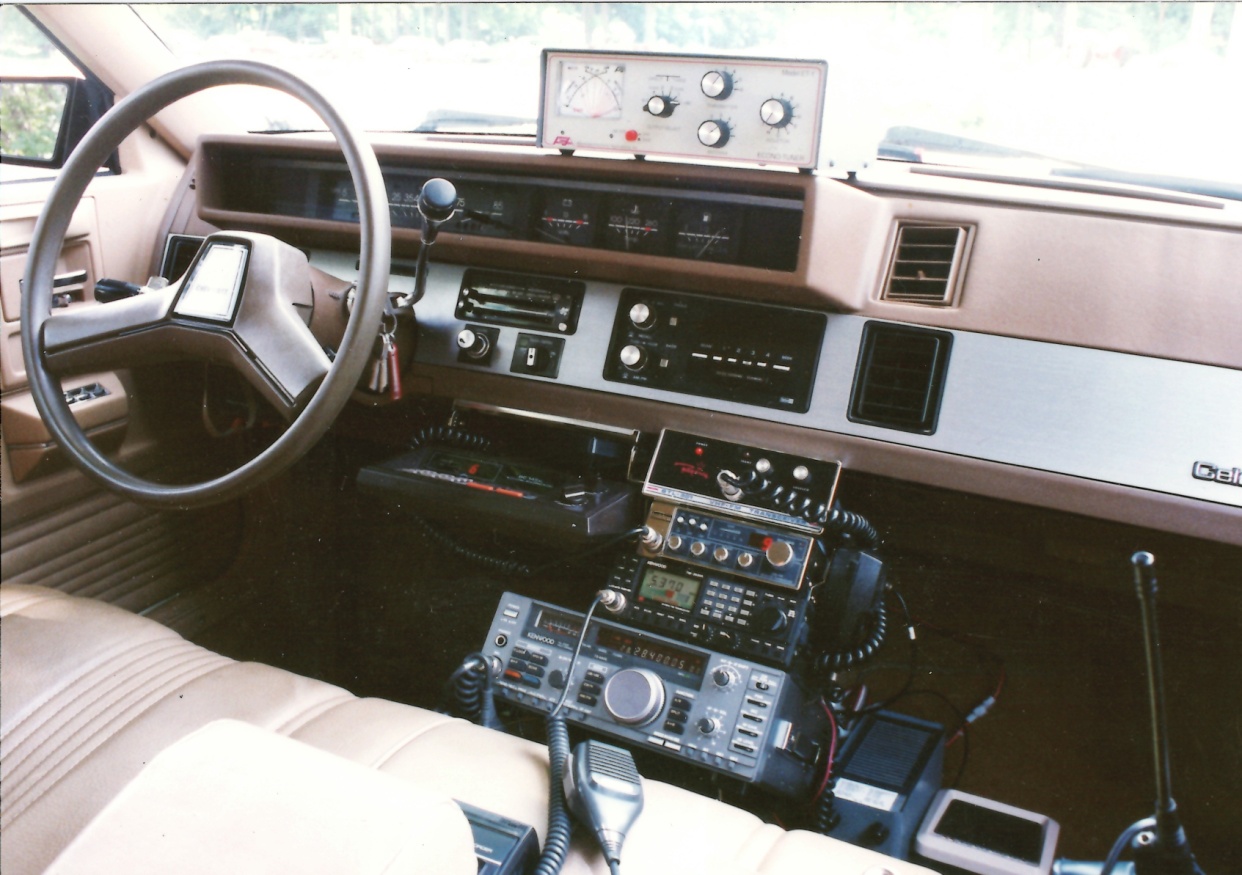
Amateur Radio . . What is it, and how can it help in disasters?
You’ve heard the news stories. In one disaster after another, communication systems can fail or become overloaded. Sometimes impacted communities are cut off from contact with response agencies. At other times the various responding agencies cannot contact one another or their own units in the
field. When multiple jurisdictions and mutual aid are involved, interoperability of communications systems can become a problem. Fortunately, when all else fails, the Amateur Radio Service can often help.
What is Amateur Radio?
In almost all countries, governments allocate portions of the radio spectrum for non-commercial use by the citizenry after individuals demonstrate the ability to use the spectrum properly. The regulations of most countries around the world provide for this opportunity through Amateur Radio. In the United States, Amateur Radio regulations are administered by the Federal Communications Commission, the same branch of government that oversees the licensing of broadcast stations and other users of the radio spectrum. Unlike most other users, Radio Amateurs, sometimes called “Hams”, are authorized only for non-commercial use of their frequencies and equipment. Hundreds of thousands of ordinary people of all ages and from all walks of life and all educational backgrounds have obtained their Ham licenses. Their main interests in radio may be technical, recreational, social or educational. Some are “on the air” every day, some operate only occasionally, and still others are inactive.

Amateur radio is different from other popular services, such as Citizens Band, Family Radio Service and General Mobile Radio Service. To become a Ham, one must pass the required examination on electronic theory, operating practices and governing regulations. But the extra effort to get a license results in much more expansive privileges than those available to CB, FRS or GMRS. Higher power limits, specialized antennas, a variety of operating modes (voice, digital, video, etc.) and a vast array of assigned frequencies ranging from short wave through microwave give Radio Amateurs unparalleled flexibility in communicating.
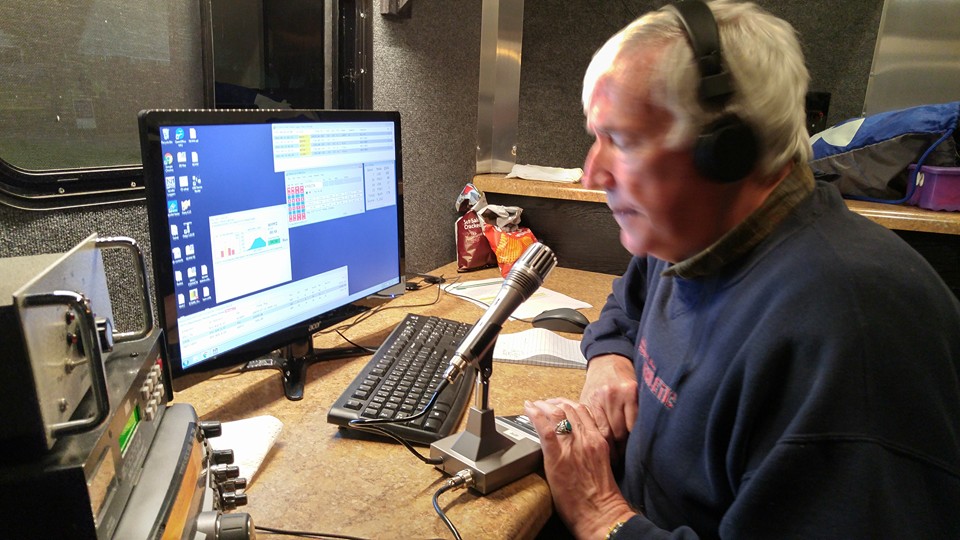
Public service is an underlying reason that the Amateur Radio Service exists. During conflicts such as World War II, Hams provided the military with a pre-trained pool of experienced communicators and technicians. During peacetime, Hams have communicated all over the world, spreading goodwill and making friends in other parts of the globe. Technically oriented Radio Amateurs have advanced the state of the art and pioneered new ways of communicating that were later adopted by government and commercial users. Ham radio has been used in classrooms to get children interested in science. And, importantly, many hams have volunteered their time, equipment and knowledge to support local, regional and international response and relief work in times of disaster.
What Happens to Communications in Disasters?
Our government agencies have huge investments in rugged, high-technology communications equipment that serve them well on a day-to-day basis. We all have “landline” and cellular
telephone service that is generally very reliable and cost-effective. So why do communications failures seem to happen at the worst times? The two basic causes are overload and infrastructure failure. Amateur radio can often overcome both these limitations.
Most communications systems are designed to handle a certain normal load level. Telephones work as long as only a given number of customers are using them at any one time. If half the phones in the City are off the hook due to the shaking of an earthquake or to people checking on the welfare of friends and relatives, parts of the system will shut down. The tower-mounted equipment that processes our cellular phone calls can accommodate only a small percentage of their subscribers using the system at one time, even absent an emergency. Too many calls at once, even during heavy commuting times, can tax the limits of that equipment. Similarly, most public-agency radio systems have a limited number of discrete frequencies, or “channels”, that are shared among many users, thus limiting the number of simultaneous conversations that can be supported. Demand during disasters can push everyday systems into overload, shutting out many users. Amateur Radio operators have a continuum of available frequencies inside designated bands from which to choose, rather than a set of discrete channels, so finding a suitable frequency to support a specific communication path is almost never a problem. Because of Hams’ technical training, they have the ability to use their share of the radio spectrum more efficiently. As a result, the Ham bands don’t get overloaded the way agency systems do.
Most communications systems routinely run on commercial electric power, the same power that runs your home and workplace. When that power fails in a disaster, those systems without generator or battery back-up are out of service. If large generators are knocked over by a quake, if they are not run
regularly, or if their fuel supply is stale, they may not work. If batteries are not properly maintained, they may be exhausted quickly. No power means no communication. Many Amateur Radio operators use equipment that can be powered from internal batteries, car batteries or other common sources of 12-volt DC electricity. By selecting radios that don’t consume much power, properly prepared Hams can make the available power sources last longer and can thus keep operating for extended periods.
First-responder agencies often used “trunked” radio systems, which use central computers to allocate radio channels dynamically among users. If the central computer is knocked out, the system fails. VHF and UHF systems may rely on remote relay stations, called repeaters, to get signals over the hills and mountains that dot their service areas. If the repeaters lose power or are otherwise out of service, the range or reach of the system becomes more limited. Hams use repeaters, too, but they can also operate without them if necessary. Not only can they communicate point-to-point using VHF and UHF radios and suitable antennas, but they can actually use the ionosphere to reflect radio signals back down to the surrounding area or to more distant points, thus overcoming the obstacles of terrain and line-of-sight limitations.
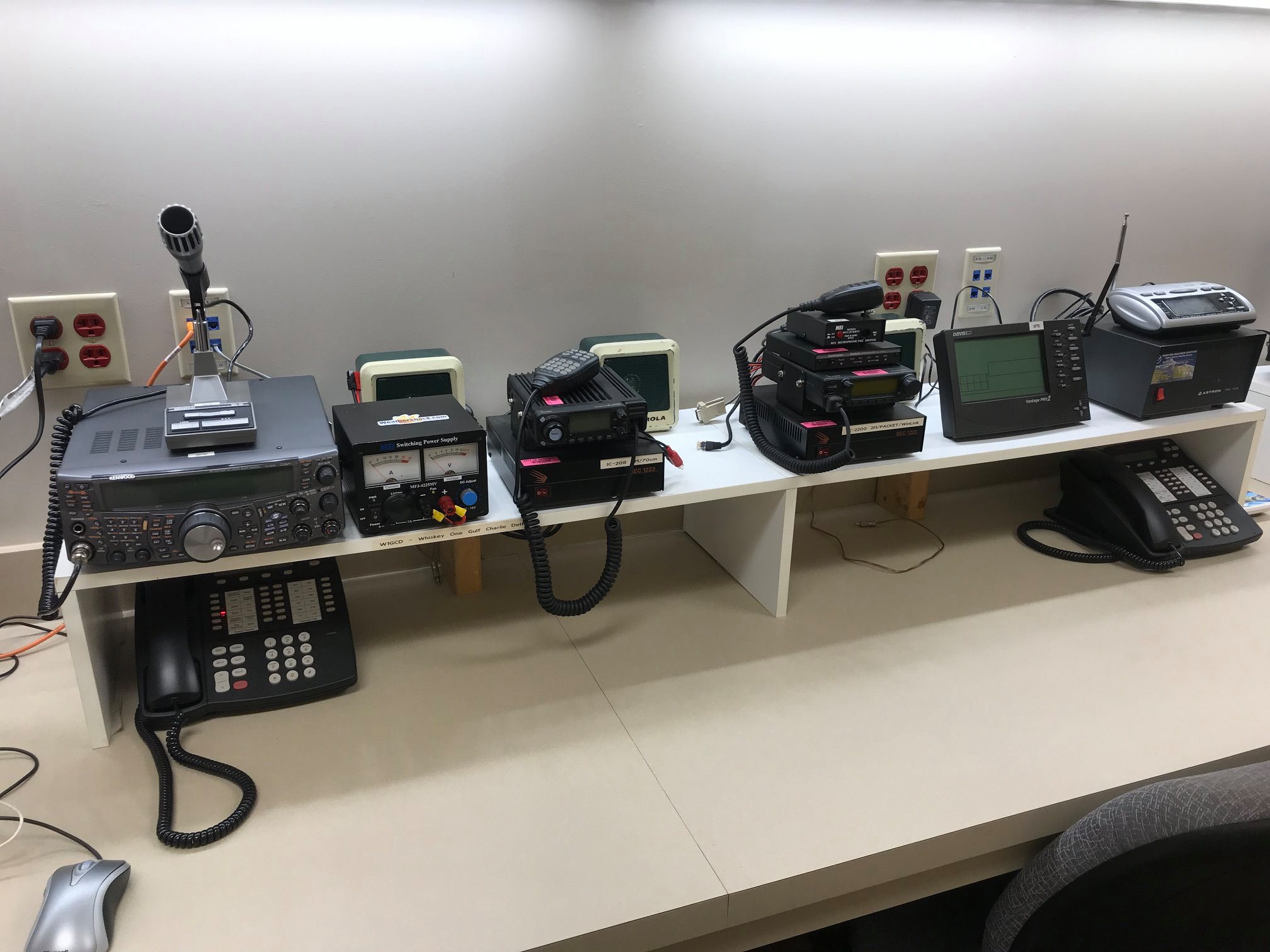
Can All Hams Do This, and Where Can I Find Them?
While every Amateur Radio operator is licensed to provide effective disaster radio communication, not all of them have the equipment, knowledge, training or preparation to do so. Those who are ready to serve when needed often join together in formal groups and teams that learn and drill together in an organized framework designed to maximize their effectiveness in time of public need. Some may organize to support a specific agency, such as the Sheriffs Department or the American Red Cross, or agency group, such as a collection of area hospitals. Others may offer their services more broadly, to any governmental or non-governmental response or relief organization in need of assistance. The largest group of the latter type is the Amateur Radio Emergency Service (ARES ®), a nationwide service operated under the auspices of the American Radio Relay League (ARRL), the national association for amateur radio in the United States. Los Angeles County has its own “Section”, or sub-unit, of ARES, which serves the area in five Districts. Its operators take formal training on such subjects as the FEMA-mandated Incident Command System and National Incident Management System, formal radio message handling, selection and operation of field equipment, and served-agency needs and protocols.

With close to 10,000 licensed Hams in Los Angeles, there are probably quite a few in your neighborhood. You may spot a tower or antenna system on a nearby property or spot a license place with a call sign such as N6XYZ or KE6ABC. You may search on-line databases for licensees in your town or ZIP code. However
you find them, introduce yourself, tell them a little about the preparedness efforts your group is involved with, and ask whether they would be interested in helping with the communications element of your neighborhood plan. If they are willing to help but need advice or training from other hams experienced in public service, suggest that they contact Los Angeles Section ARES at (818) 992-5507 for guidance and support. Remember that, as with any volunteer effort, not all Hams will have the time, equipment or desire to get involved. But every active Ham is a potential resource, and you can maintain contact by including them in your group’s outreach activities.
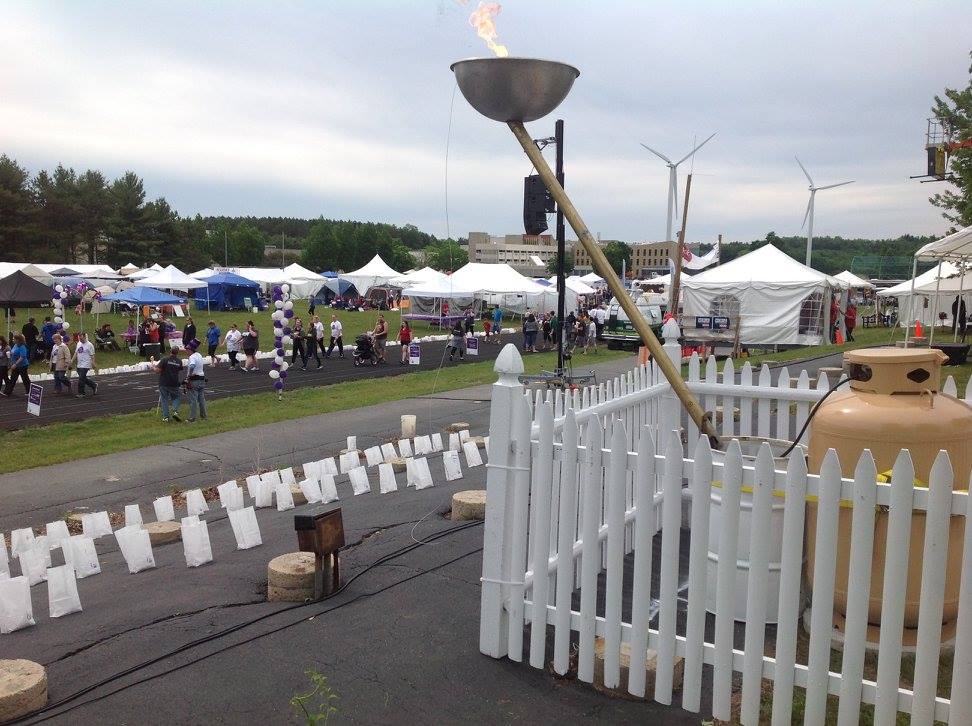
How Can Hams Fit Into Our Local Plan?
In a large-scale disaster that overwhelms the City’s response resources, there is no radio that will reliably bring a fireman, policeman or paramedic to your door. In the words of one LAFD CERT instructor, “We ain’t coming.” We must accept that reality and consider how best to utilize what emergency communications resources are available. Let’s start by listing the kinds of messages we might need to send or receive.
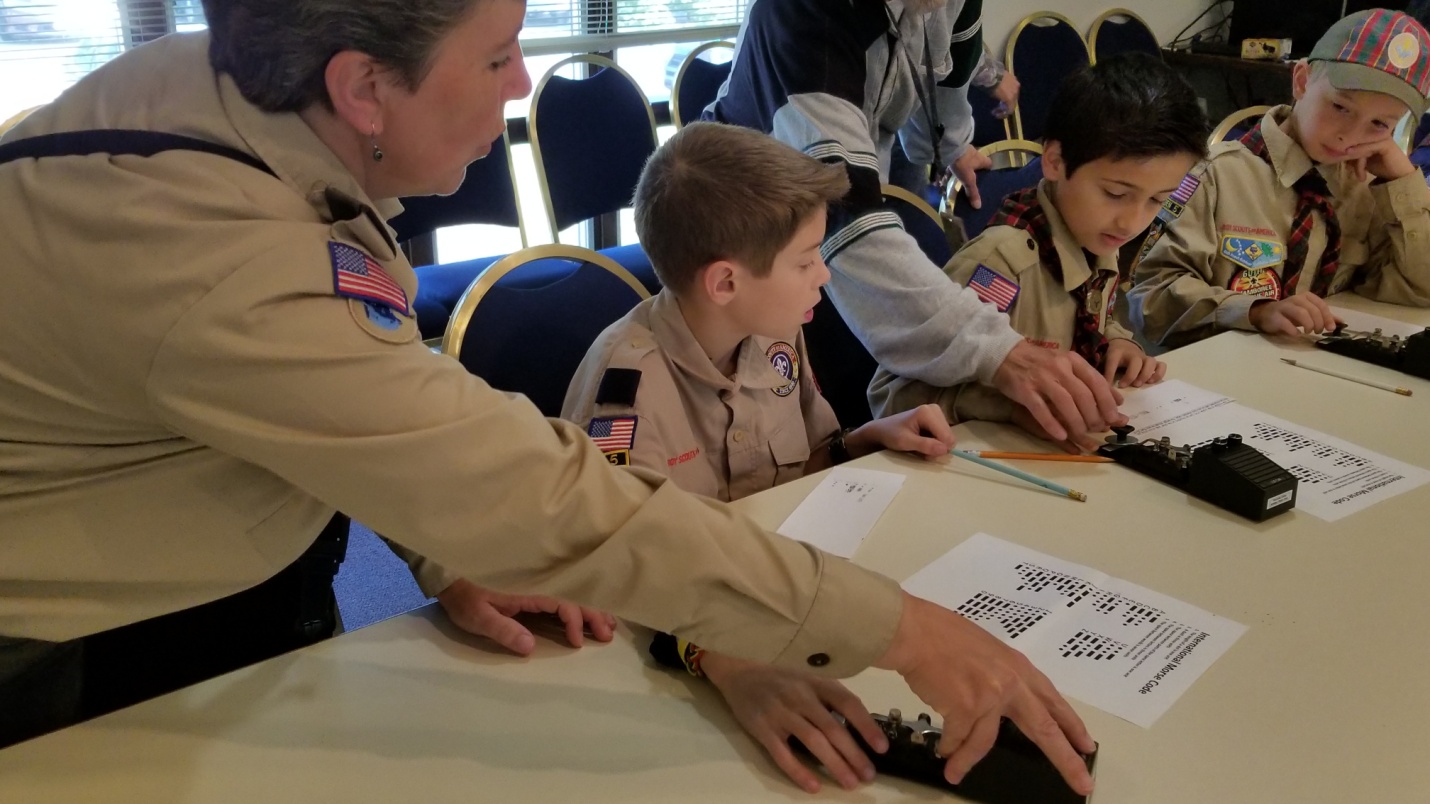
Within a neighborhood
-Coordinating the shut-off of utilities to prevent fires, explosions or water damage
-Sharing information on status of people and structures
-Marshalling local help for fire suppression, first aid, triage, search and rescue
-Accessing locally stored disaster supplies
-Arranging relocation of those requiring evacuation
Into a neighborhood
-News as to extent of infrastructure damage to surrounding area (roads, etc.)
-Status of area hospitals (In operation or out of service? Accepting patients?)
-Likely timing of (or delays in) responder arrival
-Government advisories (Areas to avoid, sheltering instructions, imminent risks)
-Requests for or offers of assistance from nearby neighborhoods
-Welfare inquiries from out-of-area concerned friends and relatives
Out of a neighborhood
-Advising first responders as to neighborhood status and priority needs
-Advising appropriate agency of any known local infrastructure damage
-Requests for or offers of assistance to nearby neighborhoods
-Welfare status reports to concerned out-of-area friends and relatives
Assuming disruption of local telephone service, most communications within a small neighborhood area (a few blocks) can be handled using FRS or GMRS handheld or by runners (kids on bicycles or scooters can carry messages quickly). If you happen to have several Amateur Radio operators in your neighborhood, they may be able to help with their more reliable and less interference-prone home, car and handheld radios.
Advisories of a general nature into neighborhoods will usually arrive via the broadcast media (remember those battery-powered
radios!) This presumes that media outlets are still on the air, have access to accurate information, and are broadcasting useful details and not just repeating the headlines. Communications with other nearby neighborhoods will likely be beyond the capability of FRS and GMRS, due to both range limitations and to channel crowding. Hams in each neighborhood, either resident or volunteering from outside, could link adjacent areas using pre-arranged networks using direct (“simplex”) frequencies that are generally reliable over distances of many miles, terrain permitting. If Amateur Radio operators are stationed at the City’s Emergency Operations Center or an Incident Command Post, they could assist in passing neighborhood-specific information from responder agencies to neighborhood-based Hams, likely through an intermediate network set up for inter-area communications using Amateur repeaters or the ionospheric “mirror” to get over the hills. Although hams often handle health-and-welfare inquiry messages from concerned outsiders in disasters, such messages are usually given lower priority – and are often deferred for up to several days – because they can quickly clog up the available communication resources that are addressing more immediate needs.
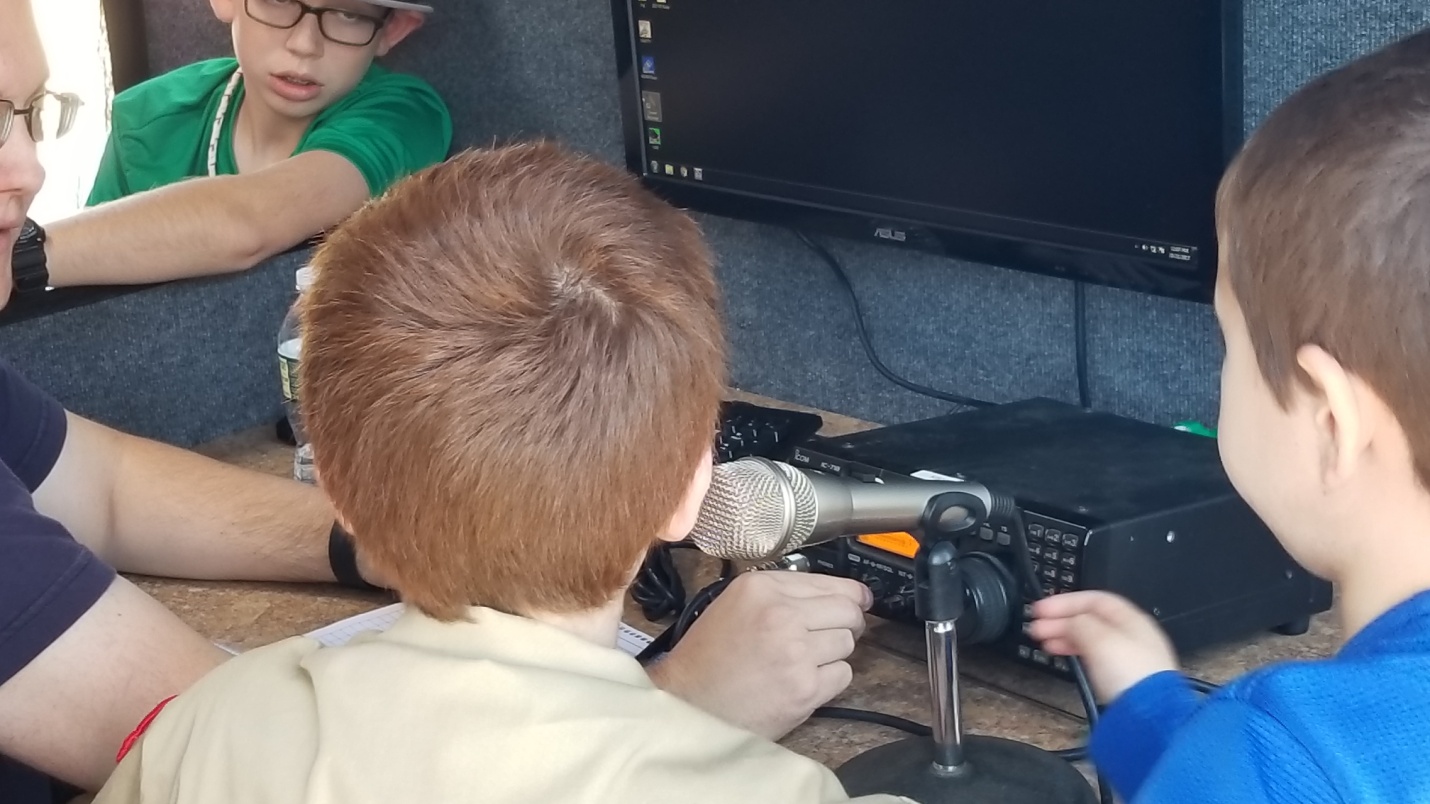
Conveying damage assessments and the most immediate needs for assistance out of a neighborhood to the appropriate agency is very important but also problematic. Those responsible for allocating scarce response resources need the best information they can get concerning fires, critical injuries and major structural damage. Areas with the greatest damage, however, may have the most difficulty communicating their situations to those who need to know. Again assuming that Amateur Radio operators are stationed at the City’s Emergency Operations Center or an Incident Command Post, the same higher-level networks mentioned above could function as an information pipeline from neighborhoods to response managers. In the neighborhoods, Hams communicating with adjacent areas could pass higher-level messages through one Amateur designated as the area liaison to the higher-level net(s). Outgoing welfare and status messages could be collected and given to a separate Ham or team of Hams whose role is to relay those messages via Radio Amateur stations outside the affected region to their final destinations.
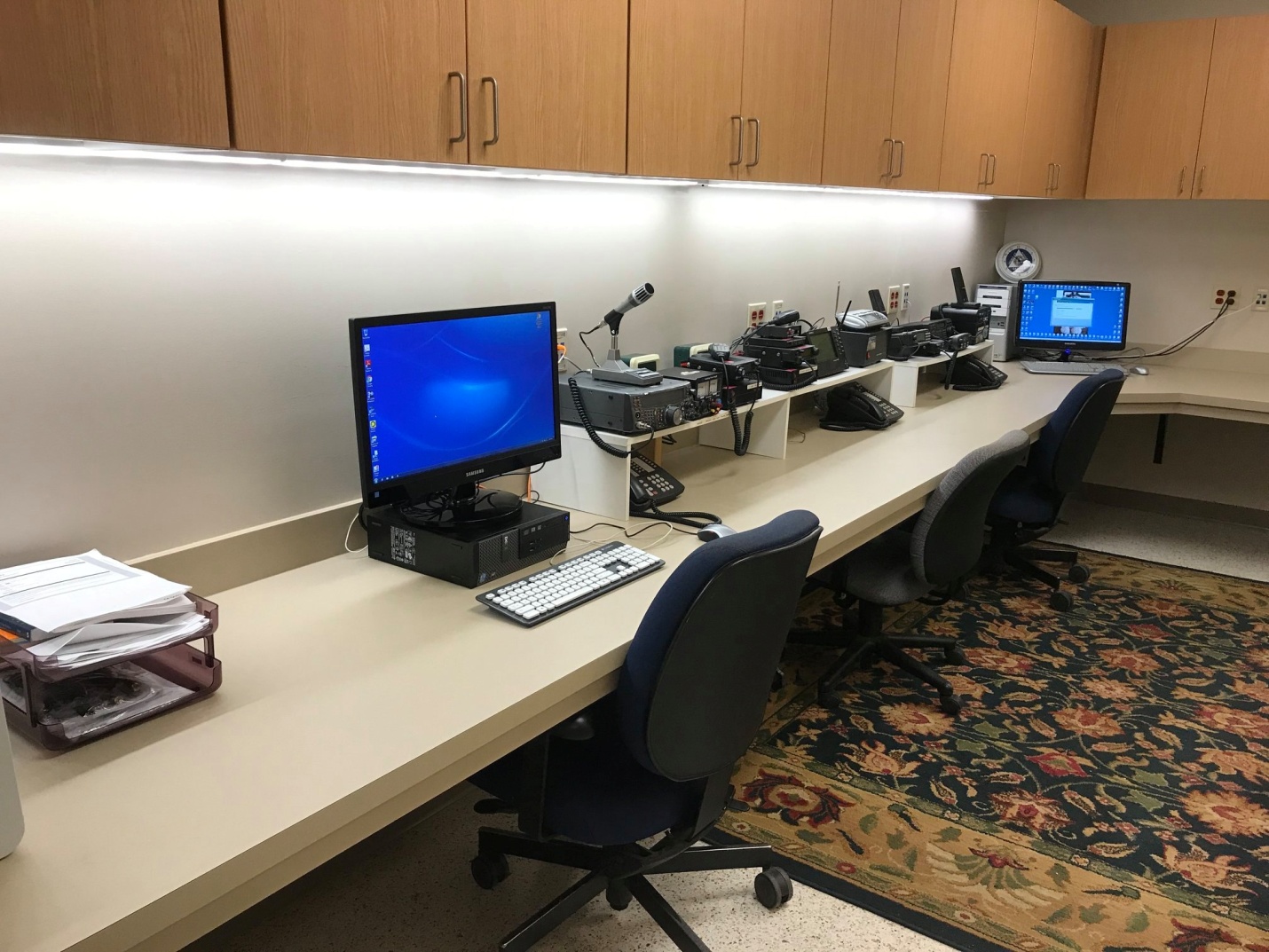
The flexibility Radio Amateurs have in selecting their operating frequencies or channels, contacting other Hams directly or through repeaters, communicating locally or with distant stations, and establishing multiple networks or layers of communication paths enables them to fill many neighborhood and agency needs in a disaster. But none of this happens spontaneously. The agencies we rely on for aid must accept and work with trained and willing Ham volunteers and include them in drills and planning processes. Working relationships must be established; credentials and clearances must be arranged. The effectiveness of primary and back-up communications systems must be tested and refined well before the actual need arises. Members of the Amateur Radio Emergency Service are already working to build relationships, conduct training, participate in drills and increase ARES’s capacity to serve the needs of the City and its neighborhoods. Neighborhood groups can get to know their local Hams; invite them to participate in local preparedness efforts; steer them toward ARES, if needed, for training and network building; support rather than oppose their attempts to install and maintain effective antenna systems,; and encourage City officials to include Amateur Radio at all levels of the City’s disaster preparation and response planning.
